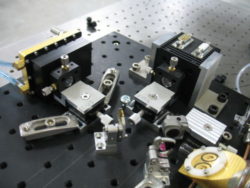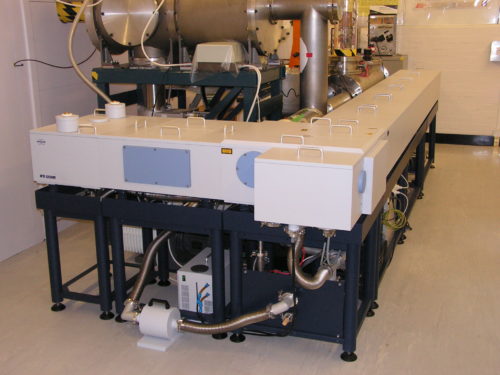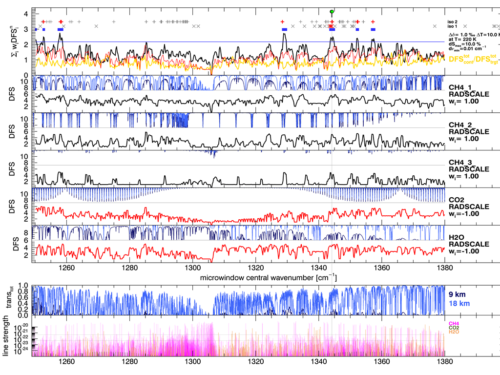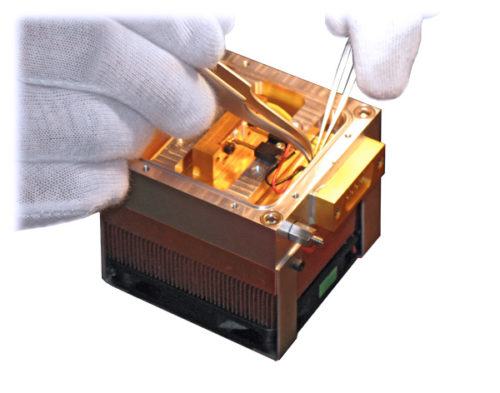Harwell TCCON – 3 years of GHG measurements
September 2023, the Harwell TCCON observatory has reached three years of operational measurements. The observatory was accredited in September 2020...


New laser spectroscopy concepts, instruments, and applications to enable high precision sensing systems operating in-situ or remotely.

The group operates the Fourier Transform spectroscopy facility dedicated to high resolution laboratory spectroscopic studies.

Purpose-built codes and algorithms for spectroscopic instrument simulations, sensing analysis, mission studies, and data processing.

Solutions to miniaturized and rugged spectroscopic sensors for real world deployments and associated technologies.
September 2023, the Harwell TCCON observatory has reached three years of operational measurements. The observatory was accredited in September 2020...
Monitoring methane emissions is essential to develop accountable, trusted greenhouse gas emission mitigation strategy. Based on its expertise in laser...
Using hollow waveguide hybrid optical integration, the group develops miniaturized mid-infrared laser absorption spectrometers for isotopologue ratio analysis. One of...
Earth is changing at an unprecedented pace. One of the most pressing global issues faced by humankind relates to climate...
Lightweight, power-efficient, low-cost, yet efficient, sensors are highly sought after for space applications. Hyperspectral and ultraspectral (spectroscopic) remote sensors are...
The Spectroscopy Group is part of the H2020 GECO consortium led by Reykjavik Energy. For the GECO project, the group...
In collaboration with the University of Reading, Department of Meteorology, the RAL Space Spectroscopy Group works on a four year...
In collaboration with MIRICO Ltd and Shell SGSI, the group has developed a novel laser sensor for long open path...
In collaboration with NCEO and University of Leicester, the High-Resolution Spectroscopy Facility undertake laboratory experiments on halocarbon reference spectroscopy to...
Ultrafast laser inscription (ULI) of glasses is known to produce single- and multi-mode waveguides, which, to date, have mostly been...
An essential component of quantifying, understanding and predicting changes in the Earth’s carbon cycle is a global measurement system of...
In collaboration with the University of Leicester and Edinburgh, the group is developing a ground based remote sensing facility for...
Microsatellite missions have been developing rapidly over the last 5 years: 158 launched in 2014 and 212 forecasted for 2015....
Volcanic degassing is the main pathway of carbon release from the Earth’s interior to the atmosphere. In order to constrain...
This project focuses on the demonstration and assessment of thermal infrared laser heterodyne spectro-radiometry for the remote sensing of carbon...
Detecting chemical threats at safe standoff distances An eye-safe, mid-IR hyperspectral active standoff detection system provides identification, detection, and confident...
From an initial breadboard concept development intended for planetary landers, the group has developed some novel concept for laser isotope...
Laser Dispersion Spectroscopy (LDS), is a new gas sensing technique that applies a novel approach to tuneable diode laser spectroscopy....
The group develop a new technology based on widely tunable cavity enhanced sensors, for gas and liquid phase analysis. When...
One activity within the Spectroscopy Group of RAL Space consists of developing enabling technologies relevant to laser-based instruments for molecular...
Funded by STFC proof of concept.
Quantum cascade laser sensing techniques based on cavity enhanced techniques (OF-CEAS, CEAS, CRDS) as well as multipass asorption cells have...
Terahertz quantum cascade lasers are not yet as mature as their mid infrared counterparts. However, terahertz quantum cascade lasers are...
Text on o3 work.
RAL Space Spectroscopy Group - 2018